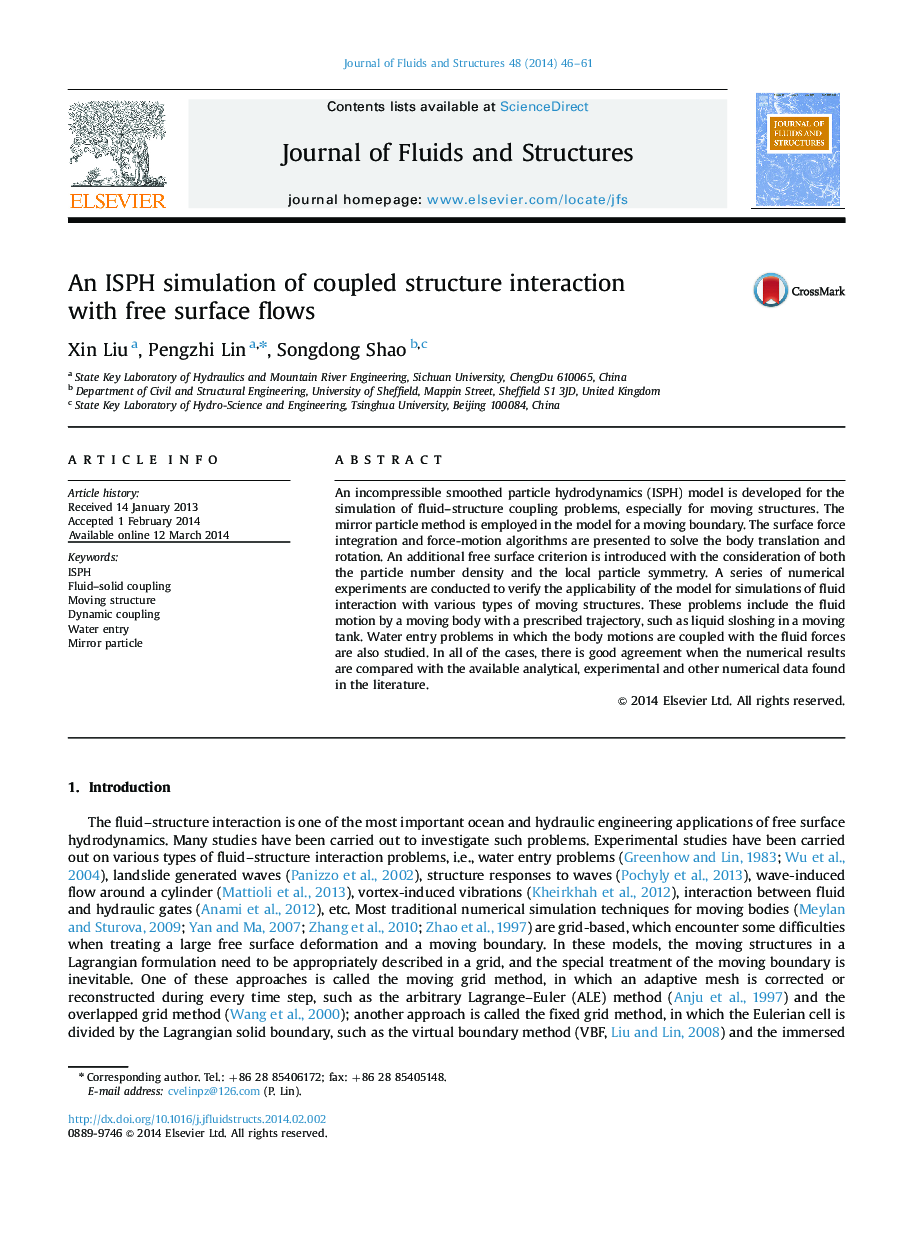| Article ID | Journal | Published Year | Pages | File Type |
|---|---|---|---|---|
| 793625 | Journal of Fluids and Structures | 2014 | 16 Pages |
•Develop an ISPH model for the simulation of fluid–structure coupling problems, and the detailed force and motion computation processes are introduced.•Systematically conduct a series of wave–structure coupling problems to further verify the applicability and accuracy of the mode.•Simulate the cube falling into water with three degree of freedoms using present ISPH model.
An incompressible smoothed particle hydrodynamics (ISPH) model is developed for the simulation of fluid–structure coupling problems, especially for moving structures. The mirror particle method is employed in the model for a moving boundary. The surface force integration and force-motion algorithms are presented to solve the body translation and rotation. An additional free surface criterion is introduced with the consideration of both the particle number density and the local particle symmetry. A series of numerical experiments are conducted to verify the applicability of the model for simulations of fluid interaction with various types of moving structures. These problems include the fluid motion by a moving body with a prescribed trajectory, such as liquid sloshing in a moving tank. Water entry problems in which the body motions are coupled with the fluid forces are also studied. In all of the cases, there is good agreement when the numerical results are compared with the available analytical, experimental and other numerical data found in the literature.
